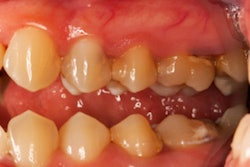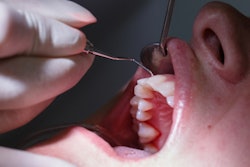
Identifying patients at greater risk of having active and progressing periodontal disease remains challenging, so it may be time for a new approach, according to a commentary published on May 4 in the Journal of the American Dental Association.
Having access to new tools and resources, including point-of-care testing, that focus on biomarkers of periodontal disease activity could result in earlier and improved decisions regarding treatment, prognosis, and recall scheduling, the authors wrote.
"Quantifiable and measurable biological parameters of inflammation and tissue destruction that are reliable would provide clinicians with real-time, actionable insights about the patient's disease status before the onset of irreversible damage," wrote the authors, led by Robert Gellibolian, PhD, cofounder and CEO of the point-of-care testing developer CellectGen in Pasadena, CA.
Periodontal disease activity is defined clinically as progressive loss of probing attachment and alveolar bone resorption. Currently, clinicians depend on clinical and radiographic measurements that identify existing periodontal disease.
Though past radiographs offer a view into a patient's past disease history, it doesn't provide information on the status of disease activity or whether a person or any specific gingival sites are at risk of developing periodontitis in the future, according to the commentary. Since the signs and symptoms of periodontal disease don't reveal themselves until after tissue destruction has occurred, clinicians don't know a patient's disease status until the damage is irreversible, they wrote.
During the last few decades, salivary markers, including matrix metalloproteinases-8 (MMP-8), have been explored as ways to differentiate between healthy patients and those with gum disease. Past studies have shown that MMP-8 is abundant in saliva and may play a role in the destructive events that are features of periodontal disease, the authors wrote.
Therefore, the development of a rapid point-of-care test that can detect MMP-8 levels, along with an analytics platform that integrates a patient's records with disease activity, could be a way to address gum disease before it's too late. This type of diagnostic could help identify those at greater risk of disease progression and an elevated grade of periodontal disease, which could be implemented into a chairside testing strategy within a dental practice, the authors wrote.
While clinicians must recognize the limitations in capacity that exist to predict disease, that doesn't mean that the status quo is the solution. It's time to shift from the current reactive approaches to diagnosing and treating periodontal disease and look for new innovations, they wrote.
"This enhanced patient-centric approach will enable both generalist and specialist clinicians to get ahead of the disease process and better personalize treatment planning," Gellibolian and the authors concluded.
Study disclosure: The study authors report that Gellibolian and Adam Markaryan, PhD, cofounder and chief research officer at CellectGen, have shares in CellectGen, and the work has been funded by private investment capital.




















